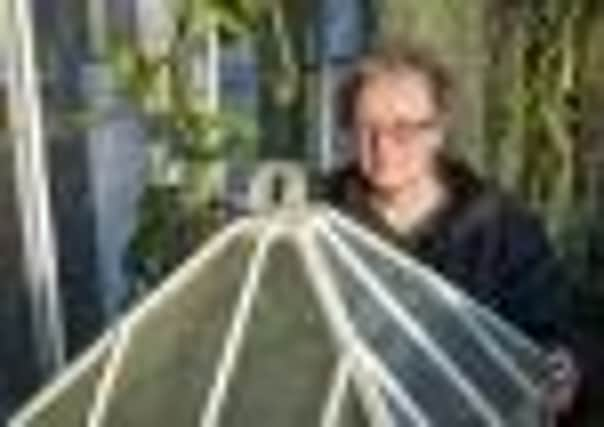Gardens: ‘The Victorian era is a very rich period to discuss’


When they weren’t creating magnificent conservatories – the abolition of glass tax combined with Victorian engineering made this the age of the glasshouse – or creating intricate geometric designs, Victorian gardeners were off to the furthest corners of the globe, hanging off cliff edges or disguising themselves as local peasants in order to bring back exotic species to grace the flower beds of the aristocracy and the newly-created middle classes.
When they weren’t doing it, they were writing about it. Encyclopedias, journals and books were churned out at a startling rate. Edinburgh University graduate John Loudon, one of the Victorian gardening greats, is reckoned to have penned 66 million words in his lifetime.
Advertisement
Hide AdAdvertisement
Hide AdEven their spats were monumental. It was, sneered Reginald Blomfield, the job of mere gardeners, like his rival William Robinson, to rake the gravel and grow the gooseberries. Garden design needed to be left to the those, such as himself, with the right intellectual capacity. Well, countered Robinson, setting out flowers in geometrical ways, in the style advocated by Blomfield, robbed a garden of all life and grace.
“I think it’s their sheer hard work that leaves you speechless,” says Phil Lusby, horticultural lecturer at the Royal Botanic Garden Edinburgh, who will be running a course on Victorian gardening next month. “It’s hard to comprehend their passion and devotion. Loudon himself had his right arm amputated but he still wanted to carry on gardening the same day. Some of their achievements are just incredible.”
Some are astounding for their scale and ingenuity, such as Joseph Paxton’s glasshouses – like those at Chatsworth House – and the heating systems which were developed enabling peaches, pineapples and melons to be grown. “There was a lot of experimentation and breeding of cultivated varieties to extend the growing seasons because the Victorians didn’t have the global transport to fly products in in a day as we do,” says Phil.
The number of plants introduced from around the world was staggering, considering this was a pre-plane era. Botanist George Forrest brought back more than 600 species, including 300 types of rhododendrons, while Robert Fortune, who began his career at the Botanics, brought back 120 and once disguised himself as a Chinese peasant to get his hands on a valuable tea plant cutting.
Others are perhaps more of a warning to future generations to think carefully as they meddle with nature. While harmless monkey puzzle and giant redwood trees became de rigeur, so did plants such as giant hogweed, now known to cause severe irritation to the skin and outcompete native plants, and then invasive gaultheria, planted by the well-known female Victorian gardener Gertrude Jekyll.
“Some quite influential gardeners would just plant some of these introduced species in the wild, in the countryside near to where they lived, with a view to embellishing the countryside. Some of these have become very problematic,” says Phil.
Without the Victorians, we wouldn’t think of putting blocks of brightly coloured annual flowers in our beds. There would be no fuchsias and the only species of rhododendrons would be the invasive ponticum.
The huge debate that raged during the Victorian period between those who argued for a more formal “artificial” style and those who advocated a more naturalistic look led to many developments, such as Jekyll’s beloved cottage garden style.
Advertisement
Hide AdAdvertisement
Hide Ad“There is a tradition of gardening going back to medieval times and in Victorian times there was great interest in looking back to that history,” says Phil.
Perhaps, above all, we can thank the Victorians for bringing gardening to the masses. After all, for all his great glasshouses, Paxton made his money selling greenhouses to amateur gardeners and Loudon, in designing one of his greatest works in 1839 – the Derby Arboretum – put into practice his belief that gardens shouldn’t just be for the wealthy and created a space where the classes could mingle. It was one of the first British parks and served as the inspiration for the Royal Botanic Gardens at Kew.
As Phil says: “The Victorian era is a very rich period to discuss, with a lot of radical change and debate.”
• Victorian Horticulture will run from the first Thursday of February to the last Thursday of May, 9.15am to 12.30pm in Lecture Room 1 at the Royal Botanic Garden Edinburgh, costing £180. The Botanics will also start running a diploma in gardening history from September. Call 0131-248 2937 or e-mail [email protected]